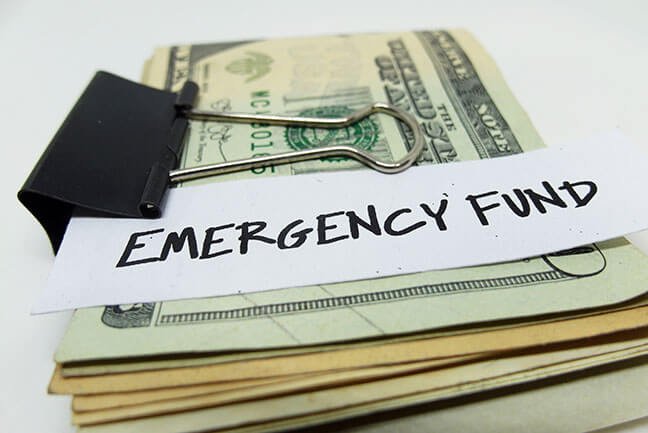Interest rates in most parts of the world have been rising for the past year and we are seeing little signs of the trend reversing anytime soon. As a result, investors have continued to pull money out of the stock markets and other risky assets and putting them into traditional bank accounts.
But while most people are familiar with the differences between traditional savings accounts and checking accounts, in the U.S. at least, there are many other different types of deposit accounts offering a variety of features that cater to depositors with different needs. As an immigrant, it’s important that you understand these differences.
In this guide, we will walk you through the 10 different types of bank accounts where you can put your money into as you build your personal finance in your new home.

Why Bank Accounts?
Before we dive into the features and characteristics of different bak accounts, some of you maybe wondering what makes bank accounts such an important option for your money. After all, haven’t some so-called financial gurus been saying all these years that the stock market is the best place to preserve your wealth?
Well, as we mentioned earlier, with the Federal Reserve now on an interest rate hiking cycle, there are plenty of reasons why you should have a better understanding of all the financial instruments at your disposal other than your stock brokerage account. And here are some of the reasons why:
Earn More Interest
When interest rates are high, the money you deposit in your bank accounts will earn more interest over time. This means your savings will grow faster, and you’ll have the opportunity to build wealth more quickly than during periods of low-interest rates. During periods of high interest rates, you may be able to generate higher return from time deposits than the stock market.
Preserve Purchasing Power
High-interest rates can help your money keep pace with or even outpace inflation. Inflation erodes the purchasing power of your money, so when interest rates are high, your savings are less likely to lose value in real terms.
Stability
High-interest rates can be an indicator of a strong and stable economy. By depositing your money in a bank account during such periods, you are positioning yourself to benefit from the overall financial stability.
But even without high interest rates, bank accounts still provide plenty of benefits.
Safety and Liquidity
Bank accounts are generally considered safe and liquid. Your deposits are typically insured by the Federal Deposit Insurance Corporation (FDIC) in the United States, up to certain limits, which means your money is protected from bank insolvency. Plus, you can access your funds easily when you need them.
Diversification
Bank accounts can be a part of a diversified investment strategy. While they may not offer the same potential for high returns as riskier investments like stocks or real estate, a typical check or savings account, or even money market account, may provide better stability and security to your portfolio.

Emergency Fund
High yield savings accounts can be an excellent choice for building or maintaining an emergency fund. Having easily accessible cash in a high-interest account can help you cover unexpected expenses without going into debt.
Short-Term Goals
If you have short-term financial goals, like saving for a vacation or a down payment on a home, bank accounts provide a safe and accessible place to park your money until you’re ready to use it.
So now that we have explained the benefits of bank accounts, let us walk you through the many different types of accounts you can access here in the U.S., starting with the most traditional checking accounts.
Checking Account
Probably one of the most common and many people’s first ever bank account, and also the type that offered by most financial institutions. A checking account is a basic account that allows you to deposit and withdraw money frequently, and to write checks. It is often used for day-to-day transactions, such as paying bills, making purchases, and accessing cash through ATMs. Many checking accounts come with a debit card for easy access to funds.
Savings Account
Another common type of bank account A traditional savings account is designed for storing money you don’t plan to use immediately. Because of its liquidity, savings accounts typically offers a lower interest rate compared to other types of accounts but provides a safe place to save money and earn some interest. Savings accounts are a good choice for building an emergency fund or saving for specific financial goals.
Money Market Account (MMA)
Money market accounts are similar to savings accounts but often offer higher interest rates even compared with high-yield savings accounts. The main difference is that they may have minimum balance requirements and limited check-writing abilities. MMAs are suitable for individuals who want to earn more interest on their savings while still having some liquidity.

Certificate of Deposit (CD)
A CD is a time deposit account with a fixed term (e.g., 6 months, 1 year, 5 years). In exchange for locking in your money for a set period, CDs typically offer higher interest rates than savings accounts. Early withdrawal may result in penalties. The interest rate of your CD varies with the term you choose, the amount you put in, and the prevailing interest rate at the time.
Individual Retirement Account (IRA)
RAs are specialized accounts for retirement savings. A typical financial institution normally offers two main types: Traditional IRAs, where contributions may be tax-deductible, and Roth IRAs, where qualified withdrawals are tax-free. These accounts offer tax advantages but often have restrictions on when and how you can access your funds.
Health Savings Account (HSA)
HSAs are designed to help individuals save for qualified medical expenses in a tax-advantaged manner. Contributions are tax-deductible, and withdrawals for eligible medical expenses are tax-free.
Business Accounts
These are designed for business owners and come in various forms, such as business checking accounts, business savings accounts, and business credit lines. Most banks offer these accounts to help you manage business finances separately from personal finances.
Joint Accounts
Joint accounts are shared by two or more individuals. They can be either checking or savings accounts and are commonly used by spouses, partners, or family members for managing shared expenses.

Trust Accounts
Trust accounts are used to manage assets for the benefit of someone else, typically established as part of estate planning. Trustees are responsible for managing the funds in accordance with the terms of the trust.
Custodial Accounts
These accounts are set up by adults for the benefit of minors, often used for gifting and financial planning for children. They are managed by a custodian until the minor reaches a certain age.
The above are the primary types of bank accounts you’ll find in the U.S and and each type serves a specific purpose, so it’s essential to choose the one that aligns with your financial goals and needs.
Before deciding, you need to pay attention to the different features associated with these accounts, such as whether there’re monthly maintenance fees, early withdrawal fees, or minimum balance requirement, etc. Note that they can vary from banks or credit unions to another, so it’s wise to compare options before opening an account.

